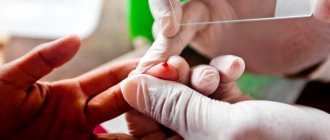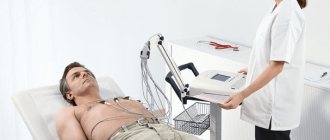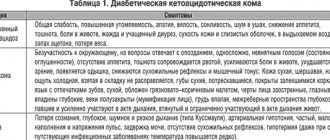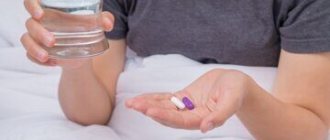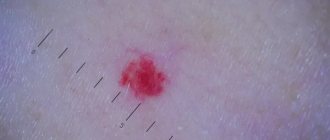How to prepare for a serological blood test?
Since serological analysis requires venous blood sampling, preparation for its delivery follows the classic recommendations for blood sampling. For correct serological analysis, you must adhere to the following rules:
- You should refrain from drinking alcohol 2-3 days before the procedure.
- Avoid physical and emotional stress on the day of blood collection
- The test should be taken before taking medications.
- Blood is taken on an empty stomach and usually early in the morning, so the patient needs to fast 8-12 hours before the procedure. A light dinner is allowed the night before.
- Eliminate fatty and spicy foods from your diet
- For 8-10 hours, do not drink strong carbonated drinks, energy drinks, coffee and tea.
Sign up for a serological test
Make an appointment
Should I get tested for coronavirus?
Every second Russian asked himself this question. So, even children know what coronavirus is, but not everyone knows in what cases it is necessary to take a test for the virus, and when it is absolutely not advisable. Six groups of the population are recommended to be tested for coronavirus infection:
- people with obvious symptoms of ARVI and chronic diseases;
- elderly people over 60 years of age with signs of respiratory infections;
- citizens who have been abroad in the last two weeks;
- people who have been in contact with those who have tested positive for the virus and those who have been abroad in the last two weeks;
- patients with pneumonia.
A referral for examination is issued by the attending physician. If you do not have any signs of infection, you have not been abroad and have not had contact with people who are sick or have been abroad, then undergoing an examination will not be advisable for you. If you fall into one of the six groups listed above, be sure to consult a doctor. He will tell you what to do next and give you a referral for a test.
Types of tests for coronavirus:
There are currently two types of viral tests approved: a molecular test (PCR) and an antigen test (serological tests).
When carrying out molecular tests, the virus is detected using polymer chain reaction (PCR). Molecular tests are carried out by taking biological material from the nasopharyngeal cavity.
When performing antigen tests, a nasopharyngeal swab or blood is taken from the patient. These biological materials are used to detect specific viral proteins. These tests are less sensitive and accurate than molecular tests, as they often show false positive results.
Serological test
This type of test is used to detect antibodies that the immune system has produced when fighting the virus. Thanks to a serological test, it is possible to find out whether a patient has been sick with coronavirus, and if so, for how long.
Antibodies or immunoglobulins (Ig)
are “protectors” of our body from various viruses, bacteria and other infectious agents. The human immune system is so smart that when pathogens from various infections enter the body, it begins to produce certain proteins, the purpose of which is to “destroy” and “remember” this infection. When the pathogen is encountered again, antibodies are produced quickly and in large quantities and can neutralize this microorganism without any consequences for the body.
Determination of various classes of antibodies in the blood is informative evidence of a current or past infectious process and helps to assess the stage of development of the infection. The level of antibodies and the dynamics of the antibody response may vary from person to person. This depends on the state of the person’s immune system, the presence of concomitant diseases and other factors. In particular, with COVID-19, immunoglobulins begin to form on average 7-14 days after contact with the virus. It is important to understand that since antibodies do not begin to be produced on the first day of infection, an immunoglobulin test may be negative because the test may drop during the period when the body has not yet had time to mount an immune response.
Immunoglobulins class M against SARS-CoV-2 (IgM)
Their level is usually available for detection no earlier than 1-2 weeks after contact with the pathogen (no earlier than 5 days from the onset of symptoms in a symptomatic course), and the total period of probable detection of class M antibodies is often less than 2-3 months - At this time, IgM antibodies are gradually completely replaced by IgG. Thus, detection of class M antibodies may indicate recent SARS CoV-2 infection. However, the result of this test alone cannot serve as a basis for diagnostic conclusions. The level of antibodies and the dynamics of the antibody response may vary individually.
Immunoglobulins G for SARS-CoV-2 (IgG)
IgG begins to be detected in the blood approximately 21-28 days after infection, and its levels may remain high for a long time. Based on the presence and level of IgG antibodies in the blood, the presence of past infection can be assessed and the presence of a specific immune response can be determined.
Depending on which class of immunoglobulin is detected in a particular type of study, these testing methods have different effectiveness at different stages of the disease.
The following types of serological tests are available:
- Quick diagnostic
- ELISA test
- Chemiluminescence analysis
- Neutralization immunoassay
Fast diagnostic method.
The advantage of this method is that the results of the study can be obtained within 15-20 minutes after the test. It detects immunoglobulins in the patient’s blood, which begins to develop immunity immediately after infection with the virus. The plus of the test is speed, the minus is insufficient accuracy. If the test is positive, then with a 100% probability the patient is infected. But a negative test may not be valid and does not provide a 100% guarantee that the patient does not have the virus. This type of research is most often recommended before traveling to another region of the country or abroad.
ELISA test
Enzyme immunoassay allows you to see the response of the immune system to the invasion of infection. This type of test is also known as an ELISA test (enzyme-linked immunosorbent assay). The ELISA test takes longer than the rapid test but has higher sensitivity, meaning it is more likely to be able to detect specific immunoglobulins in the blood serum.
ELISA tests are carried out:
- all employees of medical organizations of the Department of Health - weekly,
- hospital patients – on the day of hospitalization,
- patients of day hospitals and CT centers - at the first visit,
- patients of clinics (as directed by a doctor).
IHLA test.
An immunochemiluminescent test is a laboratory blood test. This type of study is an analogue of ELISA. In diagnosing coronavirus, this test is good because it presumably allows you to determine the quantitative level of IgM or IgG antibodies to the SARS-CoV-2 coronavirus strain in a clinical sample (serum, heparinized or citrated plasma) on automated analyzers. Reaction principle: two-stage sandwich method. The reaction system includes a substrate, an oxidizing agent, and an enzyme catalyst.
The following people pass the IHLA test:
- all employees of medical organizations of the Department of Health - weekly,
- hospital patients – on the day of hospitalization,
- patients of day hospitals and CT centers - at the first visit,
- patients of clinics (as directed by a doctor).
Neutralization immunoassay
The presence of antibodies in the body does not mean that a person has developed immunity to the virus. This is due to the fact that not all antibodies are able to neutralize the virus. Most serological tests provide information about the qualitative or quantitative content of antibodies to the virus. An “antibody neutralization” assay measures the ability of antibodies to prevent viral replication. This test is the “gold standard” for identifying “working” antibodies against coronavirus in people. This test uses the patient's blood. The analysis is carried out by mixing the serum with the corresponding virus and then introducing the resulting mixture into a cell culture. Carrying out this type of research is very labor-intensive and takes at least 5 days. This test is not recommended as a routine diagnostic procedure and is used primarily for scientific purposes.
What are sexually transmitted diseases?
The content of the article
Sexually transmitted diseases can be caused by bacterial, viral, fungal, or parasitic infections. They can be infected through sexual contact with a sick person - either vaginally, orally or anally.
The most common sexually transmitted diseases include chlamydia, syphilis, genital herpes and gonorrhea. HIV infection is also very dangerous, which leads to the development of AIDS, that is, acquired immunodeficiency syndrome.
Most future patients believe that sexually transmitted diseases do not affect them - this is obviously incorrect reasoning, because all sexually active people are at risk of infection unless they are 100% sure (confirmed by the results of an appropriate test) that their partner/sexual partner is healthy.
Moreover, the insidious and often initially asymptomatic nature of STDs means that many infected people are unaware of their carrier status and unknowingly infect others. Undetected sexually transmitted diseases also pose a great threat to the carrier himself - the lack of appropriate treatment can lead, for example, to infertility, miscarriage, premature birth, blindness, a significant decrease in immunity, damage to organs such as the liver and heart, and even death of the patient.
Decreased immunity
Microbiological studies
The purpose of a microbiological study is to isolate the causative agent of this disease from infected areas, so it is necessary to take a smear from the patient (in men, most often from the urethra, in women - from the urethra or cervix). The collected material is introduced into special media on which any pathogenic microorganisms grow under appropriate conditions (incubation takes about 2 days).
Microbiological studies of sexually transmitted diseases
After this time, the condition of the environment is checked - if it becomes overgrown, microorganisms are identified on it. Once a given bacterium/fungus is identified, its drug resistance is also tested so that appropriate treatment can be given.
Viruses, on the other hand, should not be propagated in cell cultures because they only grow in living cells (for example, fertilized chicken eggs are used for this) - detecting viruses in this way is a complex and expensive process, so other methods are usually used.
Molecular research
Confirmation of the presence of pathogenic factors is also possible thanks to molecular tests using the PCR (polymerase chain reaction) method. This is a genetic test that detects the DNA or RNA of a specific pathogen in a sample taken from a patient (the test material can be a swab from the urethra, cervix, throat or anus).
Molecular studies using PCR
This test is highly sensitive and specific, allowing pathogens to be detected as early as possible among all diagnostic methods.
ONLINE REGISTRATION at the DIANA clinic
You can sign up by calling the toll-free phone number 8-800-707-15-60 or filling out the contact form. In this case, we will contact you ourselves.

